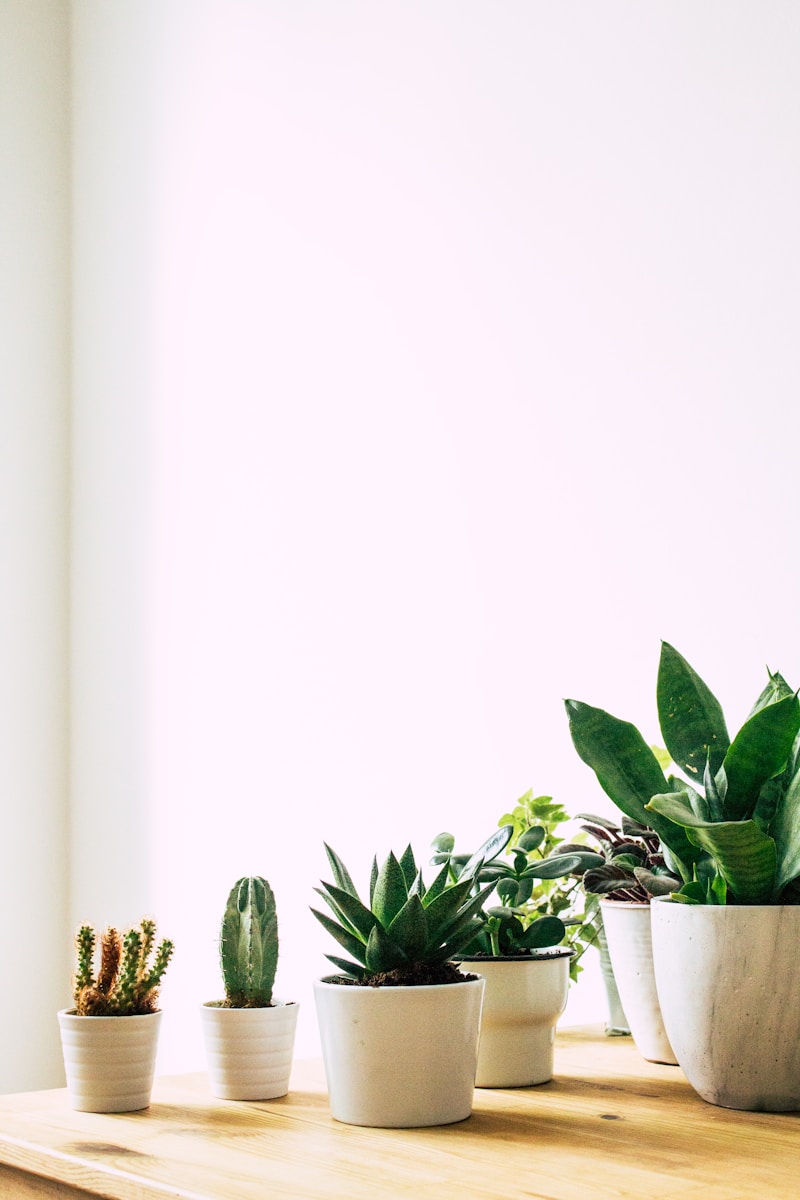Studies have shown that indoor air pollution can be substantially worse than outdoor air, which is a major worry for many people. As a result, there is a rise in interest in plants that cleanse the air, with many people turning to them as a safe and efficient solution to enhance the indoor quality of the air.

While some plants, like the snake plant known as mother-in-law’s tongue or the peace lily, are well-known for their ability to filter the air, other plants, like succulents, are less well-known for this characteristic. We’ll go into the topic of air purification, and air purifying succulents, and we will answer the question do succulents clean the air in this post.
We’ll discuss the advantages and disadvantages of adding these low-maintenance plants to your indoor air area, as well as the scientific research on succulents and the quality of the air.
Things to consider before you grow succulent plants indoor
There are several significant elements to take into account before deciding to cultivate succulents indoors. These consist of:

Lighting
To grow and thrive, succulents need strong, indirect light. Make sure your location gets adequate natural light or that you have access to artificial grow lights before you start growing succulents indoors.

Temperature
Succulents can be sensitive to temperature changes because they prefer warm, dry settings. To protect the plants, indoor temperatures should be maintained between 60 and 85 °F (15 and 29 °C).
Humidity
Succulents demand low levels of humidity and are vulnerable to problems like mildew or decay in humid conditions and can purify the air. You might need to take action to lower the humidity levels in your interior environment if you reside in a humid climate.
Soil
To prevent root rot, succulents need soil that drains properly. Use a soil moist mixture designed specifically for succulents or a cactus soil mixture, or enhance drainage by adding sand or perlite to a regular potting mix.
Watering
Succulents are present indoors and may survive for extended periods without water; however, it’s crucial to avoid overwatering them as this can cause root rot. Succulents should only be watered when the soil seems dry to the touch, as a general rule.

Container and room
To stop water from collecting at the bottom of the container, choose a container with drainage holes. Also, make sure the succulent has adequate room to grow. It’s crucial to select a container that is the right size for your succulents because some species can get quite huge over time, necessitating the use of a size indicator or resizer to ensure proper growth and space management.
Pests and diseases
Succulents are prone to pests and diseases, just like any other type of plant, like aloe vera and a snake plant. Make sure you have a strategy to deal with common problems like spider mites, mealybugs, and fungal infections before you start growing succulents indoors.
Advantages of taking care of succulent plants indoors
Succulent care inside can provide several benefits, such as:
Low maintenance
Since succulents are adapted to survive in dry environments and can go for extended periods without water, they are typically simple to maintain. Because of this, they are the perfect option for those who are time-constrained or very busy.
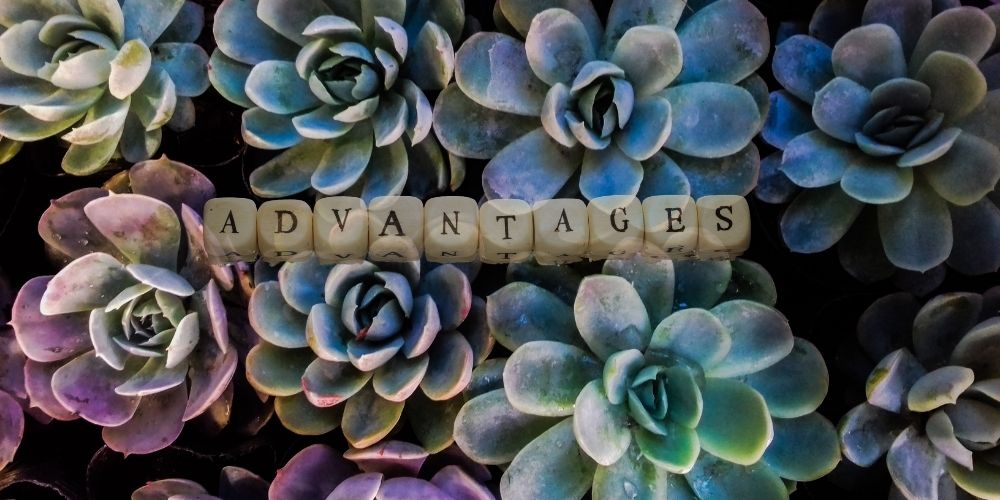
Improved quality of air or air purification
Succulents produce oxygen and can nonetheless contribute to purifying indoor air by releasing oxygen during photosynthesis and absorbing some dangerous chemicals, harmful toxins, and pollutants that are present in indoor air.
Thus decreasing the indoor air pollution resulting from cigarette smoke, even if they may not be the most effective plants to purify the air.
The Corn plant and aloe vera are ideal houseplants that will naturally purify your air by absorbing toxins.
Aesthetic appeal
Succulents can bring a touch of natural beauty to any indoor room because of their great range of shapes, sizes, and colors. They can serve as focal points, decorative elements, or even as live works of art. In addition, the snake plant can be cultivated in a variety of container sizes and shapes and is highly prized for its aesthetic appeal.
The snake plant and the corn plant are native to West Africa. Moreover, a snake plant and aloe vera can survive a variety of lighting situations, preferring strong indirect light but tolerating low light as well as a corn plant. A snake plant features long, erect leaves that can reach heights of several feet. The leaves are normally green with yellow or white stripes.
Versatility
Succulents like snake plants are an excellent choice for many different places because they can grow in a variety of indoor circumstances, including low-light situations. They are adaptable to a variety of design aesthetics and can be grown in pots, terrariums, or other containers.
Stress reduction
Studies have shown that taking care of plants can have a variety of positive effects on mental health, including lowering stress and anxiety. Succulents produce oxygen, remove harmful toxins, and can add a calming and soothing presence to your indoor space, promoting a tranquil atmosphere, in addition to reducing air pollution.
Disadvantages of taking care of succulent plants indoors
While caring for succulents indoors has numerous advantages, there are a few potential negatives to take into account, such as:
Succulents are adapted to live in dry areas; therefore, if they are overwatered, their roots may rot. For indoor gardeners who have the propensity to overwater their plants, this can be a typical problem.
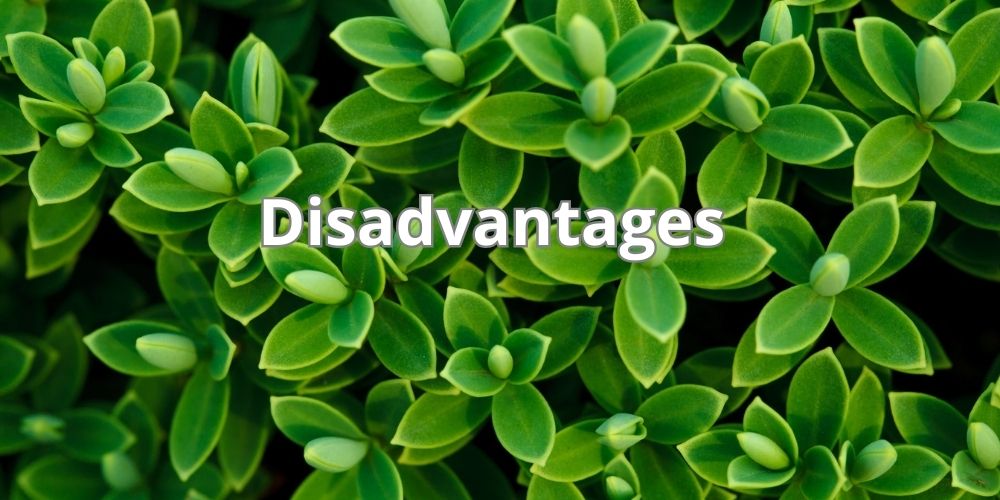
Lack of sunlight, succulents can endure low light levels, but sunlight is still necessary for them to develop and thrive. They may grow lanky or begin to lose their brilliant color if they do not receive enough light or if they are under poor indirect sunlight.
Succulents are prone to pest and disease problems, just like any other plants. This can be particularly troublesome in indoor settings, where pests like mealybugs or spider mites can quickly migrate from plant to plant.
Succulents can be cared for easily, although they might not grow as quickly or as big as certain other kinds of plants. As a result, they may not have as much impact as you might have hoped in your indoor setting.
Succulents can accumulate dust on their leaves, which over time can make them appear dingy or unclean. It might be important to clean them frequently to maintain them looking their best.
How does air purification by plants take place
Phytoremediation, a technique used by plants to purify the air, takes place. In this process, plants absorb, degrade, and metabolize dangerous pollutants and chemicals in the air via their leaves, roots, and soil microbes.

Formaldehyde and benzene are two atmospheric contaminants that can get trapped in a plant’s leaves’ stomata when they come into touch with the leaves. Once inside the plant, the contaminants may be digested and broken down by enzymes into inert byproducts.
Formaldehyde, benzene, and trichloroethylene can all be removed from the air by certain plants, such as snake plants and spider plants.
During photosynthesis, plants release oxygen in addition to degrading contaminants, which can contribute to a room’s increased supply of breathable air. This is particularly useful in enclosed spaces where poor ventilation, dust, or off-gassing from furnishings or building materials can all degrade the quality of the air.
What are volatile organic compounds
A class of chemicals known as volatile organic compounds (VOCs) are released into the air from several sources and quickly vaporize at ambient temperature. These volatile organic compounds can have both immediate and long-term consequences on human health and the environment and can originate from both natural and artificial sources.

You may expose yourself to volatile organic compounds like benzene, formaldehyde, and ammonia if you use common household products like detergent, paper towels, tissues, and cleaning products.
A NASA study states succulents can clean and purify 87% of the volatile organic compounds present in indoor air
What are the best air-purifying succulents
There are a few succulent species that have been demonstrated to have some air-purifying qualities, although succulents are not often thought of as plants that filter the air like certain other species. The best air-purifying succulent plants are:
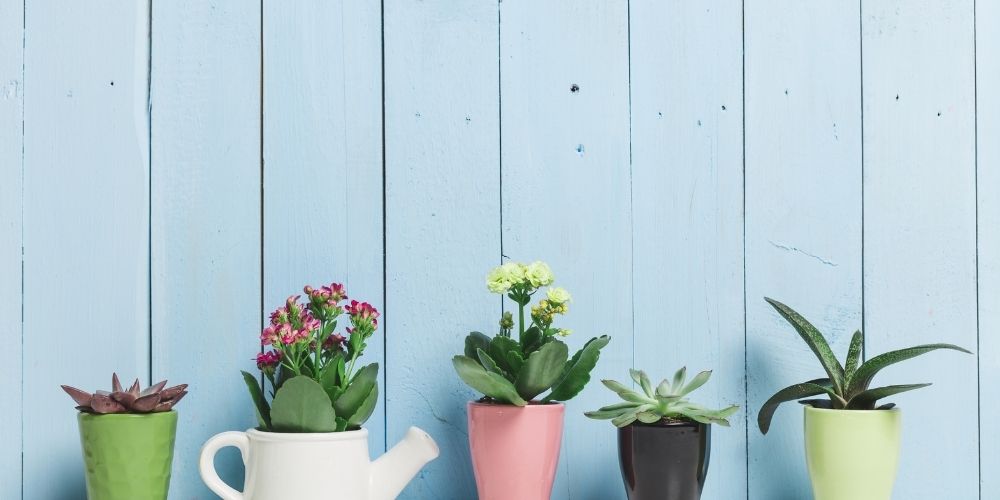
Aloe vera, well-known among the best air-purifying succulents, is frequently seen in cosmetics and other items. Aloe vera has also been demonstrated to assist in the removal of formaldehyde and benzene from the air, making it a suitable plant for indoor air purification.
Sansevieria, aloe vera, or the snake plant, is renowned for its capacity to eliminate airborne pollutants like formaldehyde, trichloroethylene, and benzene. Additionally, the snake plant is a low-maintenance plant that does well in a variety of interior settings.
Although technically not a succulent, the spider plant (Chlorophytum comosum) is a common indoor plant renowned for its air-purifying abilities. It can assist in clearing the air of dangerous substances, including formaldehyde and xylene.
The Jade plant (Crassula ovata), this common succulent, is used frequently in bonsai-inspired designs. It may not be as good at eliminating pollutants from the air as some other plants, but it can still make a small contribution to purifying the air.
It’s important to keep in mind that these succulent plants’ ability to filter the air may differ based on the size of the plant, the size of the room, and the amount of airborne contaminants.
They may not be as efficient as certain other plants that purify the air, such as the peace lily or the Boston fern, but they can still have some favorable impacts on the quality of the air.
Consider a variety of species to identify the ones that are most suited to your needs and tastes if you’re specifically looking for plants to enhance indoor air quality.

FAQ
[expert_review_faq params=”JTdCJTIycWElMjIlM0ElNUIlN0IlMjJxJTIyJTNBJTIyV2hhdCUyMGFyZSUyMHN1Y2N1bGVudHMlM0YlNUNuJTVDbiUyMiUyQyUyMmElMjIlM0ElMjJQbGFudHMlMjBjbGFzc2lmaWVkJTIwYXMlMjBzdWNjdWxlbnRzJTIwYXJlJTIwZGlzdGluZ3Vpc2hlZCUyMGJ5JTIwdGhlaXIlMjBjYXBhY2l0eSUyMHRvJTIwc3RvcmUlMjB3YXRlciUyMGluJTIwdGhlaXIlMjBnbG9zc3klMjBncmVlbiUyMGxlYXZlcyUyQyUyMHN0ZW1zJTJDJTIwYW5kJTIwcm9vdHMuJTIwVGhleSUyMGNhbiUyMHN1cnZpdmUlMjBpbiUyMGRyeSUyQyUyMGFyaWQlMjBhcmVhcyUyMHdoZXJlJTIwb3RoZXIlMjBwbGFudHMlMjBtaWdodCUyMGZpbmQlMjBpdCUyMGRpZmZpY3VsdCUyMHRvJTIwZmxvdXJpc2glMjB0aGFua3MlMjB0byUyMHRoZWlyJTIwc3BlY2lhbCUyMGFkYXB0aW9uLiU1Q24lNUNuU3VjY3VsZW50cyUyMG9jY3VyJTIwaW4lMjBhJTIwd2lkZSUyMHJhbmdlJTIwb2YlMjBmb3JtcyUyQyUyMGRpbWVuc2lvbnMlMkMlMjBhbmQlMjBodWVzJTJDJTIwYW5kJTIwYXJlJTIwZnJlcXVlbnRseSUyMHByYWlzZWQlMjBmb3IlMjB0aGVpciUyMGRpc3RpbmN0aXZlJTIwYW5kJTIwZXllLWNhdGNoaW5nJTIwYXBwZWFyYW5jZS4lMjBDYWN0aSUyQyUyMGFsb2UlMjB2ZXJhJTJDJTIwYWdhdmUlMkMlMjBjb3JuJTIwcGxhbnQlMkMlMjBhbmQlMjBlY2hldmVyaWElMjBhcmUlMjBqdXN0JTIwYSUyMGZldyUyMGV4YW1wbGVzJTIwb2YlMjBjb21tb24lMjBzdWNjdWxlbnQlMjBzcGVjaWVzLiU1Q24lNUNuQmVjYXVzZSUyMHRoZXklMjByZXF1aXJlJTIwbGl0dGxlJTIwY2FyZSUyMGFuZCUyMG1heSUyMGJyaW5nJTIwYSUyMHRvdWNoJTIwb2YlMjBuYXR1cmFsJTIwYmVhdXR5JTIwdG8lMjBhbnklMjBsaXZpbmclMjBzcGFjZSUyQyUyMHN1Y2N1bGVudHMlMjBhcmUlMjBwb3B1bGFyJTIwaW5kb29yJTIwcGxhbnRzLiUyMEluJTIwYXJpZCUyMG9yJTIwZGVzZXJ0JTIwcmVnaW9ucyUyMHdoZXJlJTIwdGhleSUyMG1heSUyMHN1cnZpdmUlMjBpbiUyMGhvdCUyQyUyMGRyeSUyMGVudmlyb25tZW50cyUyQyUyMHRoZXklMjBhcmUlMjBmcmVxdWVudGx5JTIwZW1wbG95ZWQlMjBpbiUyMG91dGRvb3IlMjBsYW5kc2NhcGluZy4lMjIlN0QlMkMlN0IlMjJxJTIyJTNBJTIyRG8lMjBzdWNjdWxlbnRzJTIwb3h5Z2VuYXRlJTIwdGhlJTIwYWlyJTNGJTVDbiUyMiUyQyUyMmElMjIlM0ElMjJUaHJvdWdoJTIwdGhlJTIwYWN0JTIwb2YlMjBwaG90b3N5bnRoZXNpcyUyQyUyMGFsbCUyMHBsYW50cyUyQyUyMGluY2x1ZGluZyUyMHN1Y2N1bGVudHMlMkMlMjBjYW4lMjBoZWxwJTIwdG8lMjBveHlnZW5hdGUlMjB0aGUlMjBhaXIuJTIwUGxhbnRzJTIwdGFrZSUyMGluJTIwY2FyYm9uJTIwZGlveGlkZSUyMGZyb20lMjB0aGUlMjBhdG1vc3BoZXJlJTIwZHVyaW5nJTIwcGhvdG9zeW50aGVzaXMlMjBhbmQlMjBwcm9kdWNlJTIwb3h5Z2VuJTIwYXMlMjBhJTIwYnlwcm9kdWN0LiU1Q24lNUNuU3VjY3VsZW50cyUyMG9mdGVuJTIwaGF2ZSUyMHNtYWxsZXIlMjBsZWF2ZXMlMjBhbmQlMjBhJTIwbGVzc2VyJTIwc3VyZmFjZSUyMGFyZWElMjBmb3IlMjBwaG90b3N5bnRoZXNpcyUzQiUyMHRoZXJlZm9yZSUyQyUyMHRoZXklMjBtaWdodCUyMG5vdCUyMGJlJTIwYXMlMjBnb29kJTIwYXQlMjBveHlnZW5hdGluZyUyMHRoZSUyMGFpciUyMGFzJTIwc29tZSUyMG90aGVyJTIwcGxhbnRzLiUyMEZ1cnRoZXJtb3JlJTJDJTIwdGhlJTIwYW1vdW50JTIwb2YlMjBveHlnZW4lMjBwcm9kdWNlZCUyMGJ5JTIwaW5kb29yJTIwcGxhbnRzJTIwaXMlMjB0eXBpY2FsbHklMjBpbnN1ZmZpY2llbnQlMjB0byUyMGhhdmUlMjBhJTIwZGlzY2VybmlibGUlMjBlZmZlY3QlMjBvbiUyMHRoZSUyMHF1YWxpdHklMjBvZiUyMHRoZSUyMGFpciUyMG9yJTIwcGVvcGxlJ3MlMjBoZWFsdGguJTVDbiU1Q25Ib3dldmVyJTJDJTIwaGF2aW5nJTIwcGxhbnRzJTIwaW4lMjB5b3VyJTIwaG9tZSUyMG1pZ2h0JTIwc3RpbGwlMjBoYXZlJTIwYWRkaXRpb25hbCUyMGFkdmFudGFnZXMlMkMlMjBpbmNsdWRpbmclMjBlbmhhbmNpbmclMjBtb29kJTIwYW5kJTIwbG93ZXJpbmclMjBzdHJlc3MuJTIyJTdEJTJDJTdCJTIycSUyMiUzQSUyMkhvdyUyMGRvJTIwc3VjY3VsZW50cyUyMGltcHJvdmUlMjBhaXIlMjBxdWFsaXR5JTNGJTVDbiUyMiUyQyUyMmElMjIlM0ElMjJTdWNjdWxlbnRzJTIwYXJlJTIwYSUyMHR5cGUlMjBvZiUyMHBsYW50JTIwdGhhdCUyMGNhbiUyMHRocml2ZSUyMGluJTIwZHJ5JTJDJTIwYXJpZCUyMGFyZWFzJTIwZHVlJTIwdG8lMjB0aGVpciUyMGFiaWxpdHklMjB0byUyMHN0b3JlJTIwd2F0ZXIlMjBpbiUyMHRoZWlyJTIwbGVhdmVzJTJDJTIwc3RlbXMlMkMlMjBhbmQlMjByb290cy4lNUNuJTVDblN1Y2N1bGVudHMlMjBjYW4lMjBuZXZlcnRoZWxlc3MlMjBoYXZlJTIwc29tZSUyMGJlbmVmaWNpYWwlMjBiZW5lZml0cyUyMG9uJTIwYWlyJTIwcXVhbGl0eSUyQyUyMGV2ZW4lMjB0aG91Z2glMjB0aGV5JTIwYXJlJTIwbm90JTIwdHlwaWNhbGx5JTIwY29uc2lkZXJlZCUyMGFzJTIwYWlyJTIwcHVyaWZ5aW5nJTIwcGxhbnRzJTIwb3IlMjBwbGFudHMlMjB1c2VkJTIwdG8lMjBwdXJpZnklMjB0aGUlMjBhaXIlMjBsaWtlJTIwY2VydGFpbiUyMG90aGVyJTIwc3BlY2llcy4lNUNuJTVDblN1Y2N1bGVudHMlMjBjYW4lMjBlbmhhbmNlJTIwYWlyJTIwcXVhbGl0eSUyMGJ5JTIwcmVsZWFzaW5nJTIwb3h5Z2VuJTIwd2hpbGUlMjBwaG90b3N5bnRoZXNpcyUyMGlzJTIwdGFraW5nJTIwcGxhY2UuJUMyJUEwUGxhbnRzJTIwYWJzb3JiJTIwY2FyYm9uJTIwZGlveGlkZSUyMGR1cmluZyUyMHRoaXMlMjBwcm9jZXNzJTIwYW5kJTIwcmVsZWFzZSUyMG94eWdlbiUyMGludG8lMjB0aGUlMjBlbnZpcm9ubWVudCUyQyUyMGluY3JlYXNpbmclMjB0aGUlMjB2b2x1bWUlMjBvZiUyMGJyZWF0aGFibGUlMjBhaXIlMjBpbiUyMGElMjBzcGFjZS4lNUNuJTVDbkJ5JTIwYWJzb3JiaW5nJTIwc29tZSUyMGRhbmdlcm91cyUyMGNoZW1pY2FscyUyMGFuZCUyMGNvbnRhbWluYW50cyUyMHRoYXQlMjBjYW4lMjBiZSUyMGZvdW5kJTIwaW4lMjBpbmRvb3IlMjBhaXIlMkMlMjBzdWNjdWxlbnRzJTIwY2FuJTIwYWxzbyUyMGhlbHAlMjB0aGUlMjBhaXIlMjBxdWFsaXR5LiU1Q24lNUNuQWNjb3JkaW5nJTIwdG8lMjBzdHVkaWVzJTJDJTIwcGxhbnRzJTIwY2FuJTIwYXNzaXN0JTIwaW4lMjByZW1vdmluZyUyMHZvbGF0aWxlJTIwb3JnYW5pYyUyMGNvbXBvdW5kcyUyMChWT0NzKSUyQyUyMHdoaWNoJTIwYXJlJTIwYWlyYm9ybmUlMjBlbWlzc2lvbnMlMjBmcm9tJTIwb2JqZWN0cyUyMGxpa2UlMjBmdXJuaXR1cmUlMkMlMjBlbGVjdHJvbmljcyUyQyUyMGFuZCUyMGNsZWFuaW5nJTIwZ29vZHMuJTIwU3VjY3VsZW50cyUyMGNhbiUyMGhlbHAlMjB0byUyMHNvbWUlMjBleHRlbnQlMjB3aXRoJTIwVk9DJTIwcmVtb3ZhbCUyQyUyMGV2ZW4lMjBpZiUyMHRoZXklMjBtaWdodCUyMG5vdCUyMGJlJTIwYXMlMjBzdWNjZXNzZnVsJTIwYXMlMjBzb21lJTIwb3RoZXIlMjBwbGFudHMuJTVDbiU1Q25JdCdzJTIwaW1wb3J0YW50JTIwdG8lMjBrZWVwJTIwaW4lMjBtaW5kJTIwdGhhdCUyMGElMjBzdWNjdWxlbnQncyUyMGFiaWxpdHklMjB0byUyMHB1cmlmeSUyMHRoZSUyMGFpciUyMHdpbGwlMjB2YXJ5JTIwZGVwZW5kaW5nJTIwb24lMjB0aGUlMjBzaXplJTIwb2YlMjB0aGUlMjBwbGFudCUyQyUyMHRoZSUyMHNpemUlMjBvZiUyMHRoZSUyMHJvb20lMkMlMjBhbmQlMjB0aGUlMjBudW1iZXIlMjBvZiUyMHBvbGx1dGFudHMlMjBwcmVzZW50LiU1Q24lNUNuRXZlbiUyMHNvJTJDJTIwYWRkaW5nJTIwc3VjY3VsZW50cyUyMHRvJTIweW91ciUyMGluZG9vciUyMHNwYWNlJTIwY2FuJTIwaW1wcm92ZSUyMHRoZSUyMHF1YWxpdHklMjBvZiUyMHRoZSUyMGFpciUyMHdoaWxlJTIwYWxzbyUyMGFkZGluZyUyMGElMjBiZWF1dGlmdWwlMjBhbmQlMjBsb3ctbWFpbnRlbmFuY2UlMjB0b3VjaCUyMHRvJTIweW91ciUyMGQlQzMlQTljb3IuJTIyJTdEJTJDJTdCJTIycSUyMiUzQSUyMkRvJTIwc3VjY3VsZW50cyUyMGFic29yYiUyMGR1c3QlM0YlNUNuJTIyJTJDJTIyYSUyMiUzQSUyMlN1Y2N1bGVudHMlMkMlMjBsaWtlJTIwYWxsJTIwcGxhbnRzJTJDJTIwY2FuJTIwZ3JhZHVhbGx5JTIwYWNjdW11bGF0ZSUyMHNvbWUlMjBkdXN0JTIwb24lMjB0aGVpciUyMGxlYXZlcy4lMjBJdCUyMGlzJTIwdW5jbGVhciUyQyUyMG5ldmVydGhlbGVzcyUyQyUyMHdoZXRoZXIlMjBzdWNjdWxlbnRzJTIwYWN0aXZlbHklMjBhYnNvcmIlMjBkdXN0LiU1Q24lNUNuV2hpbGUlMjBzb21lJTIwc291cmNlcyUyMGNsYWltJTIwdGhhdCUyMHBsYW50cyUyMGNhbiUyMGhlbHAlMjB0byUyMGxvd2VyJTIwdGhlJTIwYW1vdW50JTIwb2YlMjBkdXN0JTIwaW4lMjB0aGUlMjBhaXIlMjBieSUyMHRyYXBwaW5nJTIwZHVzdCUyMHBhcnRpY2xlcyUyMG9uJTIwdGhlaXIlMjBsZWF2ZXMlMkMlMjBhbm90aGVyJTIwc3R1ZHklMjBjb250ZW5kcyUyMHRoYXQlMjBwbGFudHMlMjBjYW4lMjBvbmx5JTIwcmVtb3ZlJTIwYSUyMGxpdHRsZSUyMGFtb3VudCUyMG9mJTIwZHVzdCUyMGZyb20lMjB0aGUlMjBhdG1vc3BoZXJlLiU1Q24lNUNuVGhlJTIwbGlrZWxpaG9vZCUyMG9mJTIwZHVzdCUyMHNldHRsaW5nJTIwb24lMjBhJTIwc3VjY3VsZW50J3MlMjBsZWF2ZXMlMjBhcyUyMG9wcG9zZWQlMjB0byUyMGJlaW5nJTIwYWJzb3JiZWQlMjBpbnRvJTIwdGhlJTIwcGxhbnQlMjBpdHNlbGYlMjBpcyUyMGdlbmVyYWxseSUyMGhpZ2hlci4lMjBUaGUlMjBhY2N1bXVsYXRpb24lMjBvZiUyMHRoaXMlMjBkdXN0JTIwb24lMjB0aGUlMjBsZWF2ZXMlMjBvdmVyJTIwdGltZSUyMG1heSUyMGdpdmUlMjB0aGVtJTIwYSUyMGR1bGwlMjBvciUyMHNvaWxlZCUyMGFwcGVhcmFuY2UuJTVDbiU1Q25FdmVyeSUyMGZldyUyMHdlZWtzJTJDJTIwbGlnaHRseSUyMHdpcGUlMjB0aGUlMjBsZWF2ZXMlMjBvZiUyMHlvdXIlMjBzdWNjdWxlbnRzJTIwd2l0aCUyMGElMjBtb2lzdCUyMGNsb3RoJTIwb3IlMjBhJTIwZ2VudGxlJTIwYnJ1c2glMjB0byUyMGtlZXAlMjB0aGVtJTIwbG9va2luZyUyMHRoZWlyJTIwYmVzdCUyMGFuZCUyMGF2b2lkJTIwZHVzdCUyMGFjY3VtdWxhdGlvbi4lMjBDbGVhcmluZyUyMGF3YXklMjBhbnklMjBkZWJyaXMlMjB0aGF0JTIwbWlnaHQlMjBiZSUyMG9ic3RydWN0aW5nJTIwdGhlJTIwcGxhbnQncyUyMGNhcGFjaXR5JTIwdG8lMjBhYnNvcmIlMjBsaWdodCUyMGFuZCUyMG51dHJpZW50cyUyQyUyMGNhbiUyMGFsc28lMjBhaWQlMjBpbiUyMHByb21vdGluZyUyMGhlYWx0aHklMjBncm93dGguJTIyJTdEJTVEJTJDJTIyc2hvd190aXRsZSUyMiUzQTAlMkMlMjJleHBhbmRlZCUyMiUzQTElMkMlMjJ0aXRsZSUyMiUzQSUyMkZyZXF1ZW50bHklMjBBc2tlZCUyMFF1ZXN0aW9ucyUyMiUyQyUyMnN0eWxlJTIyJTNBJTIyc2ltcGxlLTElMjIlMkMlMjJjb2xvciUyMiUzQSUyMmJsdWUtMSUyMiU3RA==”]
Should you keep succulents in your room?
Succulents are excellent indoor plants that can grow in a range of settings, so you can keep them in your room. In fact, due to its low maintenance requirements, aesthetic appeal, and potential to enhance the quality of the air, many individuals decide to maintain succulents in their bedrooms or other indoor locations.
Succulents do need some sunlight to develop and thrive, so keep that in mind when keeping them indoors.
Place your plants near a window or in a well-lit part of your room, as most succulent species appreciate strong, indirect light.
You can also think about using artificial grow lights to provide your succulents the light they require if you don’t have access to natural light.
Watering is a crucial consideration while keeping succulents in your room. Succulents evolved to live in dry climates and frequently go for extended periods without water.
Succulents are susceptible to overwatering, so it’s crucial to allow the soil completely dry out in between watering.
Succulents should only be watered when the soil seems dry to the touch, as a general rule.
Overall, maintaining succulents in your area may be a wonderful way to add a touch of nature, enhance the quality of the air, and take advantage of the many advantages of these low-maintenance plants.
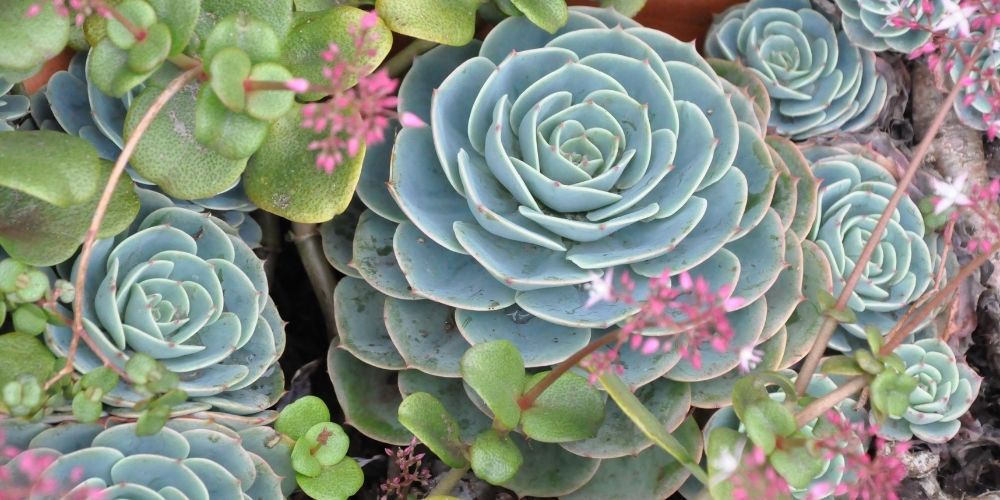
Conclusion
Succulents can improve indoor air quality, even if they might not be the most efficient air-purifying plants. Succulents emit oxygen into the atmosphere as a result of photosynthesis, which contributes to an increase in the volume of breathing air in a space.
Additionally, they can absorb some dangerous toxins and chemicals found in the indoor air, resulting in improved air quality.
Succulents among most plants may offer only a modest amount of air purification in poor indoor air quality, but they can still be an important part of fostering a comfortable and healthy interior atmosphere.
Succulents could be a wonderful option if you’re searching for a beautiful and low-maintenance way to enhance and the act of improving air quality in your home or place of business.
if you are interested in Natural Cleaning Products you can read about Homemade Cleaners

